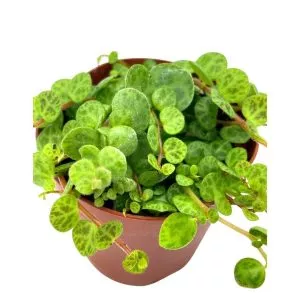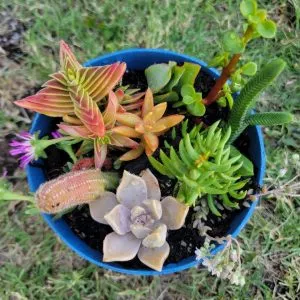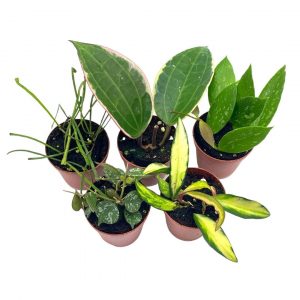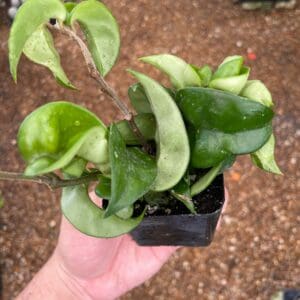Table of Contents
While they are challenging to grow with some success, it is possible. All Lithops plants need is well-drained soil with plenty of light and little water to keep these tiny treasures alive.
So, if you want a funky plant to grow, the living stones are what you need.
Pebble Plants/Lithops Plants/Living Stones/Lithops Plant
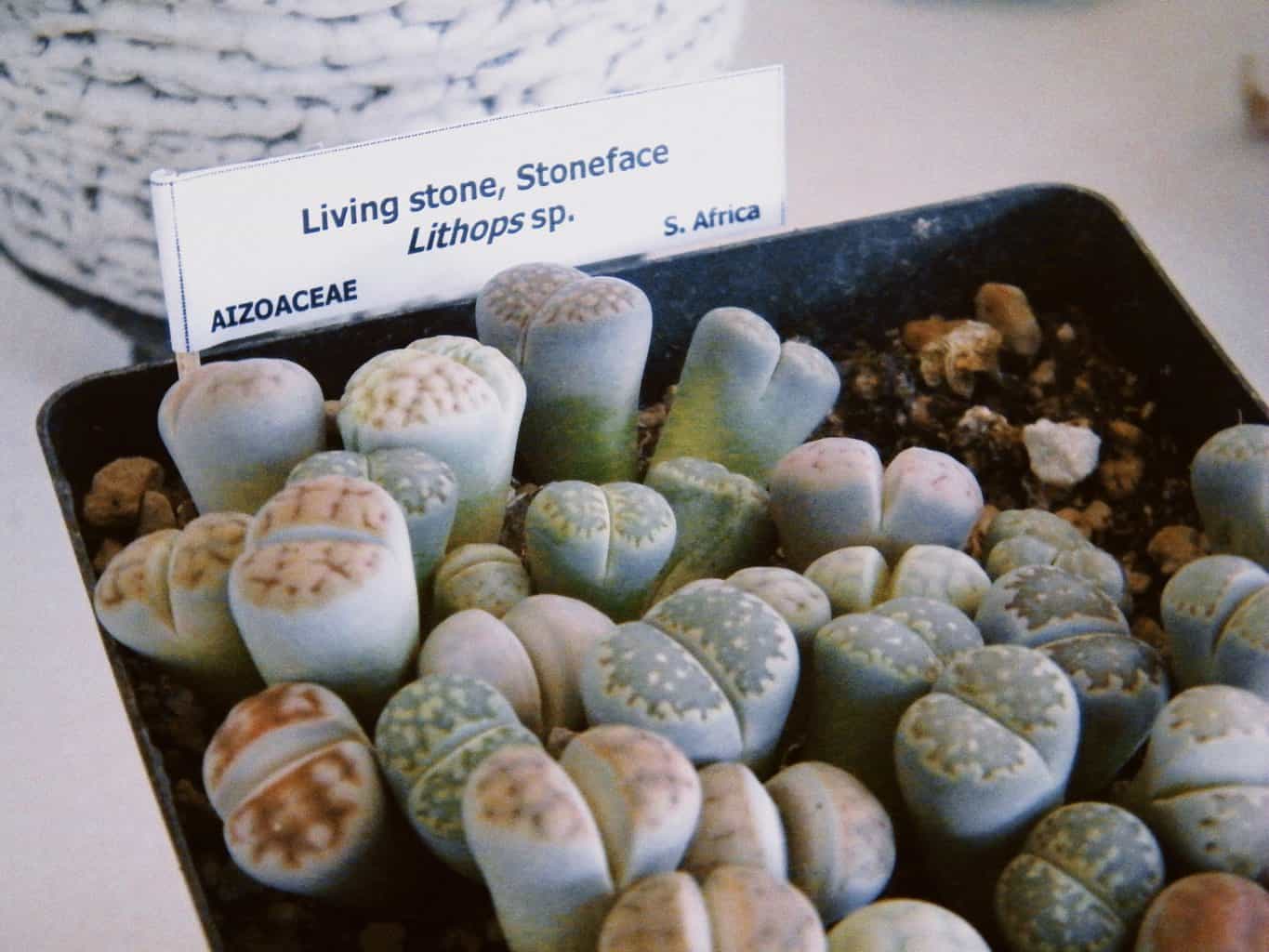
These plants are mostly called living stones and are native to Namibia and South Africa. The exciting thing is they look like stones, pebbles, and even rocks.
These living stone plants live in arid to rocky areas, and the leaves look like squishy rubber pads with a fissure separating them. The pebble plants also have a single taproot with tiny root hairs. During fall, you can see a flower emerging from the middle in yellow or white with a sweet fragrance.
These are unique plants that camouflage themselves from grazing animals and remain small, making them ideal for growing as indoor plants. Here are some different types of Lithops succulents you can grow.
Lithops localis

Pebble plants in different parts of South Africa grow under small plants and stones on gravelly plains. The color of the succulent displays a background of dark gray-brown, gray-white, brown, pink, black, brown, or only white.
It is an excellent plant from the yellow-blooming variety distinguished with pellucid dots scattered over the top surface. The dots range in color from dark gray to brown and even purple.
The pebble plant is smaller than other plants in the genus, with a shallow root and thick axis. It blooms as a daisy-like flower in yellow with a white center in fall. It can produce fruits in a boat shape with a flat top.
The fascinating plant is a collector’s item, but they are tricky regarding its growing condition. As with most succulents, they need a potting mix that drains well and does not have too much moisture.
Lithops hookeri

These Lithops flowers are medium to large, and the colors are available, with the face pattern varying from one to another. In their native habitat, the split rock plant has a solitary growth with forming clumps.
The face of the plant is more elliptical with a fissure that grows shallow at the soil surface with conjunct lobes without windows. It has dusky dots with simple forked groves and lines. The color can be brown, reddish, grayish, orange-brown, to pinkish.
The flowering stones bloom tiny flowers in yellow during fall and produce a large reddish seed capsule.
Lithops salicola
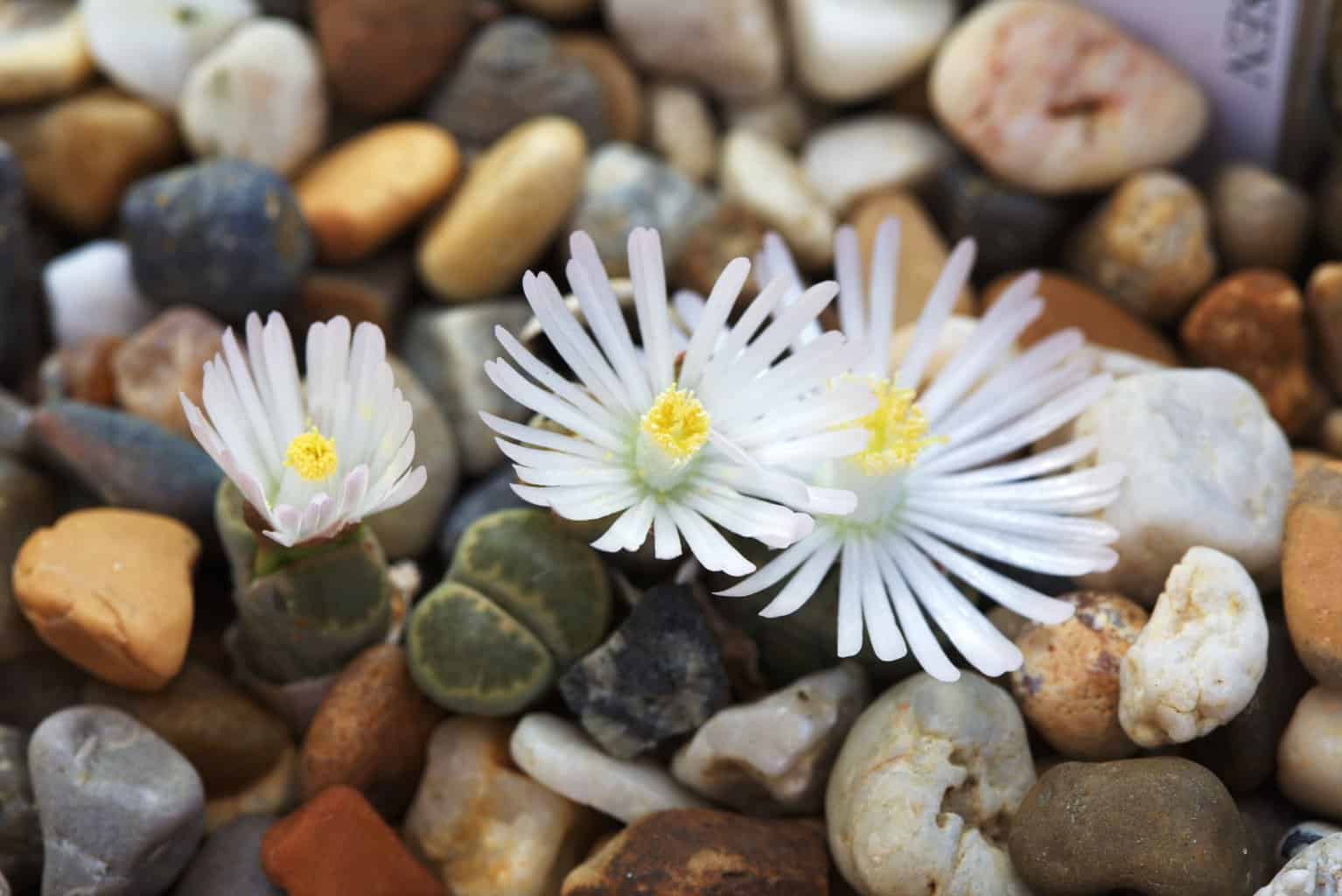
Like the other plants, this plant also comes from Southern Africa and looks like a sea anemone or a rock. It grows mutant green flowers and has a similar shape to other succulents in the genus.
One exciting thing about this plant is that the Lithops grow in clumps forming a mat fast. The mat-forming growth cycle takes decades in their natural habitat, and you see them in large mounds.
This pebble plant is one of the most tolerant against overwatering and does not quickly develop rot at the roots. In fall, it blooms as a white flower when provided with the right conditions.
Lithops lesliei

The living stones plant has many subspecies, but one that stands out is the Burchellii which grows in grassy places instead of rocks. It has a root that goes slightly deeper into the soil. With a cactus mix, you can grow this succulent plant outdoors or indoors.
During the hot and dry summer months, the gray-white to red colors vary, shrivel into the soil surface, and disappear underground. It also has a smaller size with fewer heads with a dark slate grayish window with channels.
It is also a slow grower compared to the other living stones you find.
Lithops optical

The pebble plants are similar to others in the genus, but the body has a milky pink to reddish-purple shape with a dark purple windowed top. You see this in the Rubra, which forms small clusters with up to 20 bodies as they age.
The stem is not visible, and the leaves emerge in pairs looking club-shaped with convex tips. During the summer, the plant wrinkles up. During fall, the plants produce flowers in white with a daisy-like shape.
The flowers open up late in the day, closing up at night. It also develops a fruit capsule exposing tiny seeds. These stone plants you can hand pollinate using a small paintbrush, and these plants are self-sterile.
Lithops ruschiorum

In Namibia, these living stone plants are also known as Hottento’s or Bushman’s buttocks, or even Kaokoveld Lithops.
It is an excellent Lithops starter plant to have that varies in size. Compared to the other living stone plant, it has no facial markings.
It has a white color and bears a single flower in yellow sprouting out between the two cheeks after it rains. You also see a fresh pair of leaves growing every year, replacing the old leaves.
Lithops aucampiae

This is a tiny caespitose succulent, and the whole plant grows buried in the soil with an upper truncated portion looking like leaves. As the pebble plants age, they form small clusters comprising 12 bodies.
The color varies from brown-red with brown patterns with two windowed part fleshy leaves to form a crack from which the yellow flower emerges. Sometimes they can even have a dusty pink hue.
Regarding Lithops, care needs full sun to partial shade and heavily diluted cactus fertilizer to encourage flowering.
Lithops olivacea

Out of the living stone plants, this is a distinctive species with a nail-shaped window in olive green on the upper convex surface. Sometimes you see it speckled with whitish islands and easy to identify.
The inner margins are plain and straight, while the outer margins are plain. With age, you can notice blue dots forming on the window margins with various shades of creamy gray or tinged with pink, pale salmon, to mauve colors.
The fabulous thing is this plant blooms from late summer to mid-fall.
Lithops Care Tips
These are a few varieties of living stones you can plant in a container or garden. As with most plants, the watering schedule is similar to other succulents. It is best not to water Lithops plants when it is very hot or cold.
Furthermore, the split rocks go through more than one dormant period compared to other plants. When the plant grows in its natural habitat after young plants develop new leaves in the growing season when the soil surface dries out.
The plant ceases to grow and shifts into a dormant state and needs to dry out as it is essential. After flowering in fall and the cycle completes, it goes into another dormant stage in winter.
So when watering, Lithops keep the dormant cycles in mind as too much moisture results in root rot, as with most succulent plants. Instead, provide your plants with a succulent or cactus mix comprising lava rock.
Also, give them six hours of direct light a day at a south-facing window and keep spinning the pot every few days for even growth.
Summary
These are very small plants that are sure to bring you joy in the home when cared for. It is so interesting to see the new leaf pairs growing out of the crack in the plant and even the flowers.
All it needs is a small pot, and best brought indoors in very cold temperatures taken outside in spring to early summer. These plants do not need feeding as they thrive in poor soil. So pick your choice to create a small succulent garden in your living space today.
Whether you want to buy, sell or simply reach out to other plant enthusiasts, Plantly is the right place to be!
In stock In stock In stock In stock
$11.99
Sold By:
BubbleBlooms
$14.99String of Turtles, Peperomia prostrata, in 2 inch pot Super cute great plant gift, collector’s succulent, live potted rooted and wrapped
Only 69 available and it’s in 2 people’s basket Rated 4.81 out of 5 based on 279 customer ratings03
Sold By:
BubbleBlooms
Free Shipping
$20.00
Sold By:
Blessed Family Farm
ASSORTED SUCCULENT ARRANGEMENT
Rated 4.82 out of 5 based on 22 customer ratings04
Sold By:
Blessed Family Farm
$32.99
Sold By:
BubbleBlooms
$35.99Hoya Variety Assortment Plant Set, Premium set, Variegated Wayetii, Curtisii, Macrophylla, Linearis and more in 2 inch pots
Rated 4.81 out of 5 based on 279 customer ratings00
Sold By:
BubbleBlooms
$11.99
Sold By:
BubbleBlooms
Hoya carnosa compacta Hindu Rope Plant, Very full 2″ potted starter, ready for 4-6″ pot, Krinkle Kurl, porcelain flower, wax plant
Only 995 available and it’s in 3 people’s basket Rated 4.81 out of 5 based on 279 customer ratings00
Sold By:
BubbleBlooms

